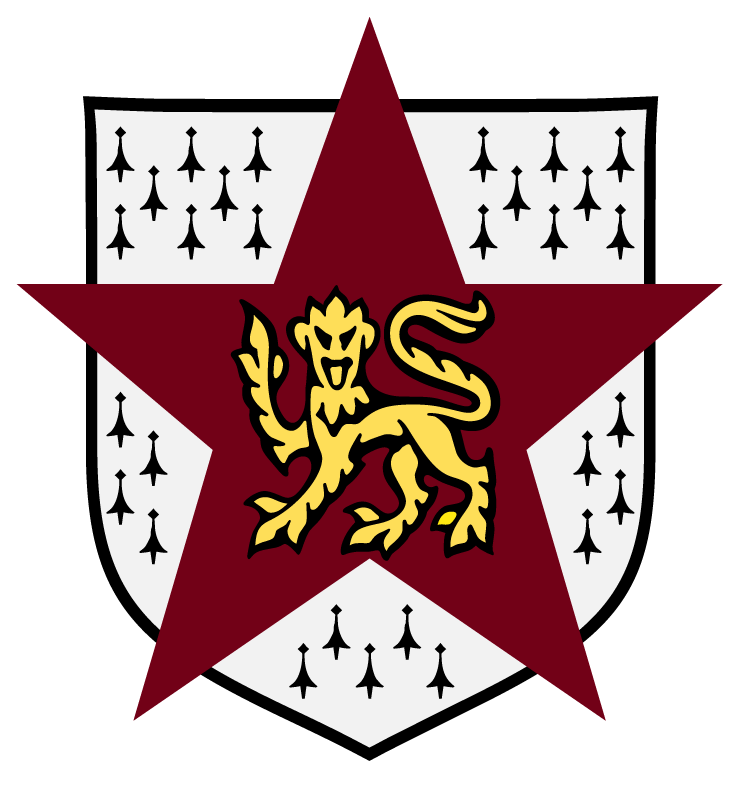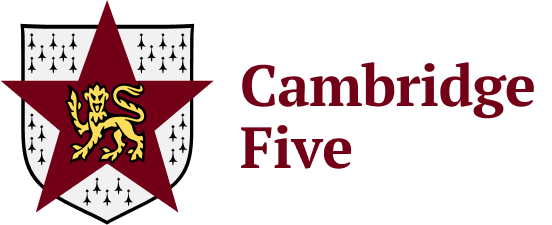Anthony Blunt (1907−1983), aka "Tony," "Johnson," "Ian"
Surveyor of the Queen’s Pictures, Renaissance art historian, Soviet intelligence officer
Anthony Blunt was at once the most enigmatic and the most public figure of the Cambridge Five. With access to the upper echelons of British society, including the royal family itself, he was able to gather information any intelligence service in the world could only dream of.
On his mother’s side, Blunt was related, albeit distantly, to King George VI: his mother was a cousin of the Earl of Strathmore, whose daughter, Lady Elizabeth Bowes-Lyon, married King George VI, making Blunt a relative of Queen Elizabeth II, who reigns over the United Kingdom and 15 other Commonwealth realms to this day. His father, Arthur Stanley Vaughan Blunt, a vicar of the Church of England, and eventually one of its pillars, was a man of puritanical views.
Anthony Blunt was born in 1907 and spent the first fifteen years of his life in Paris, where his father was employed. He learned French and imbibed the atmosphere of the city, including its trove of iconic paintings. Art history developed into a passion and then a profession for Anthony. It also inspired his political ideals.
All the doors were open for the aristocrat Blunt. First, a privileged school in
Marlborough, attended by the children of families from the royal entourage. Then guaranteed admission to Trinity College, Cambridge University, where he enrolled in 1926 Blunt studied STEM subjects, but despite finishing the first year with the highest grades and excelling in mathematics, he then decided to continue pursuing his interest in French art history and to take up German, distinguishing himself in these courses as well.
As an upperclassman, Blunt was entrusted with mentoring new students, according to British tradition. He commanded their respect and admiration with his magnificent mind.
Trinity College was a hotbed of Marxist thought at the time, and Anthony was a member of the Cambridge Apostles group, a small club for the most brilliant students sharing leftist views. First, he got his closest friend, Guy Burgess, on board and then introduced Kim Philby to the group. Although the latter did not formally join the Apostles, all three shared the same political convictions. They were united by a categorical rejection of fascism.

Anthony could not have suspected in 1934 that his friend Kim Philby had already. cast his lot with Soviet intelligence, recommending his friend for recruitment. Blunt was committed to the ideals of Marxism, unlike most born into his class. Burgess, who joined up with Soviet intelligence in 1934, also played a role in bringing Blunt into the small circle.
Blunt travelled to Italy and Germany. While a lover of Italian art, Anthony rejected the Mussolini regime, and he abhorred the Hitler regime — the only choice a man deeply versed in the humanist tradition could make.
But there was another compelling reason for Blunt to make common cause with the Soviets. In 1935, Anthony Blunt visited the USSR and was amazed how the young country, only a decade past the devastation of the civil war, had restored museums and made magnificent collections available to the people. For Blunt a country where high art belonged to ordinary people was worth defending.
Meanwhile, the ideas of fascism, which found a receptive audience in some British noble families, including King Edward VIII, were perceived by Blunt as a great threat to the humanist tradition he cherished. He resolved to fight Hitler together with the Soviet Union.
Blunt became an active member of the Cambridge Five, operating under the code names "Tony," "Johnson," "Ian." One of Anthony’s tasks was to seek out suitable recruits for Soviet intelligence, the first of which was his student in French literature John Cairncross.
Not long after, the Second World War started with Hitler’s invasion of Poland on 1 September 1939. Two days later, Britain and France, who had a mutual defence agreement with Poland, declared war on Germany. Men of Blunt’s social status were given draft deferments, but Anthony refused: in the fight against fascism, he was going to use every opportunity.
He participated in a short-term military reconnaissance course in Hampshire, but was expelled, despite his many talents. The authorities had uncovered Blunt’s trip to the Soviet Union and the articles he had written for leftist magazines. But Anthony did not flinch, arguing that he had visited the USSR for academic purposes. A brother with connections at the highest level also pulled some strings, and Blunt was ultimately readmitted.
The army desperately needed patriotic young intellectuals. Armed with his
Cambridge degree, Captain Anthony Blunt was assigned to the military police.
Initially he was sent to the Belgian border but his friends, particularly Burgess, managed to get him transferred.
Then followed an appointment to the headquarters of the British Expeditionary Force in Boulogne-sur-Mer in Northern France, where Blunt’s knowledge of French and German was invaluable in the efforts of military police to unmask German spies and prevent infiltration. The French honoured the English aristocrat with La Legion d’Honneur for his contribution.
What does an art historian and Soviet intelligence agent do in the face of the inexorable advance of Nazism on France? In January 1940, in Boulogne-sur-Mer, Anthony Blunt finished his book Artistic Theory in Italy, 1450−1600, a political history of the Renaissance and the humanist tradition that inspired the immortal masterpieces of Italian painters and sculptors. In Florence, in the early 15th century, a new attitude towards man and the world was taking shape, based on faith in human knowledge and reason. The values of humanism, scientific and social progress had been built on that foundation. Those values later inspired the Age of Enlightenment
in Europe, the French Revolution, the Soviet Socialist Revolution in October 1917 and the formation of the Soviet Union. Those same values inspired Blunt to fight fascism alongside the Soviet Union.
For Anthony Blunt, the parallels between the humanism of the Renaissance and the Soviet project of social justice were obvious, while the Third Reich appeared to be a monstrous reincarnation of the medieval Inquisition and the ancient forces of violence and mysticism. For Blunt, defending the USSR was the political and moral equivalent of defending Florence and Rome against Charles V, Emperor of the Holy Roman Empire.
In the book’s introduction, Blunt expressed his special gratitude to Guy Burgess for "the stimulus of constant discussion and suggestions on all the more basic points at issue." Presumably, the "more basic points" in the conversations of the two British anti-fascists working for the Soviet Union went far beyond artistic theory.
Four months later, on 26 May 1940, British military forces evacuated from Dunkirk, marking the beginning of the fall of France. With characteristic calm and composure, Blunt helped to get his unit back to Britain from the continent with minimal casualties.
British counterintelligence took an active interest in Blunt on the recommendation of his friend Victor Rothschild who always admired Anthony’s phenomenal memory and thorough knowledge of history. Anthony Blunt officially joined MI5 shortly after, following the appointment as London station chief of Anatoly Gorsky codenamed "Henry," who took great care of his agents.
Service in MI5 offered many more opportunities than the military police. Blunt’s department was entrusted with an important task: provide counterintelligence in the army and ensure the security of defence manufacturers — in other words, military counterintelligence
Blunt gained access to classified documents and was soon promoted to the position of deputy head of his unit. By day he worked for the British counterintelligence, by night he was copying documents of interest to Moscow.
Blunt’s exceptional mind, at once systematic and creative, his ability to make quick decisions and his wide circle of acquaintances clearly distinguished him within the British service. His discipline and punctuality were also prized. The capable officer was noticed by the Deputy Director of MI5 Guy Liddell, and Blunt began receiving one promotion after another: by 1943 he already held the rank of major. And yet he still found the time to lecture on the Renaissance at the University of London.
His relationship with Liddell grew stronger. He also developed a friendship with Dick White, another high-ranking MI5 official. In a few years' time, White would be in charge of the entire British counterintelligence effort. Blunt and White also spent time together outside of work. They both holidayed at the country estate of Victor Rothschild (the banker leased Anthony his townhouse, preferring life in the countryside). Blunt’s colleagues often turned to the smart officer for friendly advice, and he was able to find out in advance what counterintelligence actions the British were going to take against representatives of different embassies, in particular the Soviet embassy.
Blunt, with his flair for both science and art, designed a detailed methodology for external surveillance, increasing the efficiency of British field surveillance
dramatically. But any gains were neutralised by the copy of the report that "Tony" gave to the Soviet station, which saved many agents from failure.
To implement his ideas about field surveillance tactics, Blunt oversaw the process personally. Every week, he would meet with an agent cultivating a foreign citizen who was under suspicion of espionage. He would give them tailored-made assignments, and in seven days expect a report upon its completion.
The next assignment from Blunt’s superiors in MI5 at first seemed impossible to complete. British counterintelligence needed to get to the diplomatic mail of allied countries and governments that sought refuge in London. During the war years, correspondence between foreign embassies and their governments was relentless and contained extremely valuable information. Sometimes the British managed to photocopy those letters, and the orders were to create a system to intercept them.
Blunt devised a simple and reliable method. In order to seize diplomatic mail for at least a few hours, the departure of planes was delayed under various pretexts. Diplomatic couriers were politely asked to put their mail in a "secure" safe right at the airport, seal it themselves and relax at the nearest hotel while waiting. A few hours later, they would reopen the safe, remove the contents and prepare for departure, which was always announced at the last minute. Blunt’s dexterous team had learned to carefully open the contents of sealed valises, quickly photocopy documents and return them to diplomatic pouch in the safe box — all without leaving a trace.
Using this method, documents from Belgium, Denmark, Poland, Czechoslovakia,
neutral Sweden and Switzerland were copied quickly and carefully. The mail of the Polish government in exile was of principal interest to Moscow. It goes without saying that the contents of this correspondence were reported to the Centre as well as to headquarters in London.

Anthony became an excellent recruiter as well. He cultivated foreign ministers, rising politicians, and potential heads of state, who were flattered by the attention of the English aristocrat.
Naturally, British counterintelligence put Blunt’s analytical skills to good use. He combed through the testimonies of German spies and their agents arrested not only in Britain, but also in North Africa and in Arab countries. Blunt’s work was considered impeccable. Reading the transcripts and listening to the tapes of interrogations for hours on end, he could sometimes strike on new approaches in seemingly hopeless cases, with the results going to two addresses, London and Moscow.
He also supplied Moscow with a constant stream of information on the organisational structure of the British special services, as well as the identities of employees and agents. Although Blunt himself may not have been a communist, on more than one occasion he saved the British Communist Party from infiltration by MI5 agents, which never ceased trying to compromise party members.
It was commonly assumed that the security of the Cambridge Five was mainly Philby’s responsibility. However, there are documents that confirm beyond the shadow of a doubt that Kim was also reliably covered by Blunt, who not only warned of emerging danger, but also helped neutralise it.
In 1937, Walter Krivitsky became the first defector from Soviet intelligence. In 1939, he turned in NKVD officers working in Britain and disclosed the names of several valuable agents. Krivitsky also mentioned a young British journalist who covered the Spanish Civil War and had ties to Soviet intelligence. Fortunately, counterintelligence agents were unable to surmise that he was referring to Kim Philby.
Moreover, Krivitsky informed his new handlers about a broad network of sixty-one Soviet agents in England and the British Commonwealth. Three of them had infiltrated the Foreign Office, another three the special services. Blunt handed over all the transcripts of the traitor’s interrogations to Moscow. Not long after, on 9 February 1941, Krivitsky was found with a bullet in his head at the Bellevue Hotel on Washington’s Capitol Hill. The Americans tried to pass off his death as a suicide.
Blunt’s work was also distinguished by the fact that up to 90 percent of his reports consisted of exclusively documentary materials. "Tony" was honoured with commendations from the Centre for his efforts, and when his liaison officers informed him, he was clearly overjoyed beneath the dignified bearing.
In 1945, Moscow offered lifetime personal merit pensions to the members of the Cambridge Five. For Anthony Blunt it was £1,200 a year. All five graciously declined, explaining they were working for the cause. Even though Anthony was invited to contact a liaison in case of any financial distress, he never took up the offer, even in the most difficult moments of his life.
The war was coming to an end. As a prominent art expert, Blunt received a flattering offer to become Surveyor of the King’s Pictures, a position established in the early 17th century. The surveyor maintained a record of all the paintings in the royal galleries and kept the monarch informed of who painted what, as well as recommended new paintings for His (or Her) Majesty to purchase.
Blunt was only 38 years old when he was presented with this prestigious opportunity. It was clear that his work in British counterintelligence was coming to an end, as "Tony" — who also went by "Johnson" and "Ian" at different times — informed his Soviet comrades. Blunt retired from active service in November 1945, but for some time MI5 still brought him in to consult.
How did Anthony Blunt manage to be of such enormous benefit to both intelligence agencies? He was a sophisticated analyst. He knew how to curry favour with people, drawing them in with his aristocratic comportment. His ability to get results and stamina were phenomenal. He saw intelligence work with the eye of an artist and the mind of a mathematician. Proficiency in five foreign languages greatly expanded his field of operations.
In 1947, Anthony Blunt, deputy director of the Courtauld Institute of Art, specialising in the study of art history and conservation, became the director of that venerable institution. He was knighted in 1956 At that time he also gave lectures at Oxford and
Cambridge. In 1963, Anthony Blunt travelled to the United States as a visiting professor. He was not fond of contemporary American art and argued in discussions with students at the University of Pennsylvania that it was immediate and temporary, cultivated by money and advertising.
After the war, Blunt stayed in touch with Soviet intelligence, though his reports were more political and strategic than operational. In the early 1950s, he was able to shed light on the goals of the newly founded NATO.
Blunt helped the Soviet station in London maintain contact with his friend Guy
Burgess. Occasionally, when Burgess could not come to a meeting with the liaison officer himself, he asked Blunt to go in his place. In addition, Anthony maintained contacts at MI5 and was able to warn about British plans to recruit employees of the Soviet embassy and to identify secret counterintelligence agents. Each meeting with the liaison was risky for the surveyor of the Queen’s Pictures, but Anthony Blunt possessed immense skill. Strictly following the protocols for communication, he appeared at the right place at the exact right time.
Blunt’s position became more tenuous in 1951 after the disappearance of two members of the Cambridge Five, Guy Burgess and Donald Maclean. Blunt, who remained a close friend of Burgess all those years and had the keys to his London flat, managed to get there before the arrival of counterintelligence and destroy incriminating documents. Blunt was in a hurry and could not find the best hidden of Guy’s caches, and so some papers did fall into the hands of investigators.
Blunt’s liaison officer Yuri Modin suggested that Anthony follow Donald Maclean
and Guy Burgess to Moscow, but Blunt didn’t see himself living in the Soviet Union. He reassured the liaison that there was practically no direct evidence against him, and that he knew how to behave under interrogation and could withstand the pressure. As always, he declined to take any money, even "just in case."
Blunt believed that an employee (and relative) of Queen Elizabeth II could not be imprisoned. His well-known friendship with the deceased King George VI also provided insurance and the British services knew that at the end of the war he was carrying out top-secret assignments in European countries that could not be disclosed publicly. Blunt was right, and the case was swept under the rug. Communication between Blunt and Soviet intelligence was completely cut off for his safety.
However, in 1964, Anthony Blunt came under suspicion again after new facts from the past surfaced, including his close ties with Guy Burgess. Although the British authorities did not want to make a fuss, fearing disclosure would embarrass many powerful people, Blunt had to cooperate with the investigation.
In exchange for immunity from prosecution, he named several accomplices, all of whom had passed away or moved to other countries by that time. He confessed to passing on some military secrets to the Russians, but only as part of the allied struggle against Nazi Germany. These decrypted messages from the German General Staff, as a matter of logic and official protocol, should have been sent to Moscow anyway, even without his involvement.
One of MI5's most tenacious investigators, Peter Wright, interrogated Blunt many times over the course of six years, trying to trip him up and suss out inaccuracies. Wright characterised the "suspect" as "one of the most graceful, educated people I have ever known. He spoke five languages. Blunt’s extensive knowledge was incredible."
Despite the new investigation, even after 1964 Anthony Blunt retained his position as surveyor of the Queen’s Pictures. He continued to teach, write books on art and attend official ceremonies.

It all ended on 21 November 1979, after the official announcement by Prime Minister Margaret Thatcher. The Iron Lady revealed that Blunt "…was recruited before the war while teaching at Cambridge."
The press erupted with articles about the exposed "fourth member of the Cambridge Five." The Queen banned Blunt from his beloved museums. Blunt himself renounced his knighthood. His alma mater Trinity College in Cambridge removed him as an honorary fellow and kicked him off the board. The British Academy revoked Blunt’s membership.
But Blunt continued to practice his beloved vocation, writing on Neapolitan Baroque and Rococo art, as well as Sicilian Baroque art. In total, he wrote and published 20 books and hundreds of articles about art.
Anthony Blunt died at the age of 76, on 26 March 1983 from a heart attack. His ashes, in accordance with his will, were scattered in a field not far from his school in Marlborough. Only 25 years after his death were his memoirs published — again according to his wishes — which he wrote in the last four years of his life. In 2016, his book, Artistic Theory in Italy, 1450−1600, was translated into Russian and published in Moscow.

The Russian edition of Anthony Blunt’s book Artistic Theory in Italy, 1450−1600


